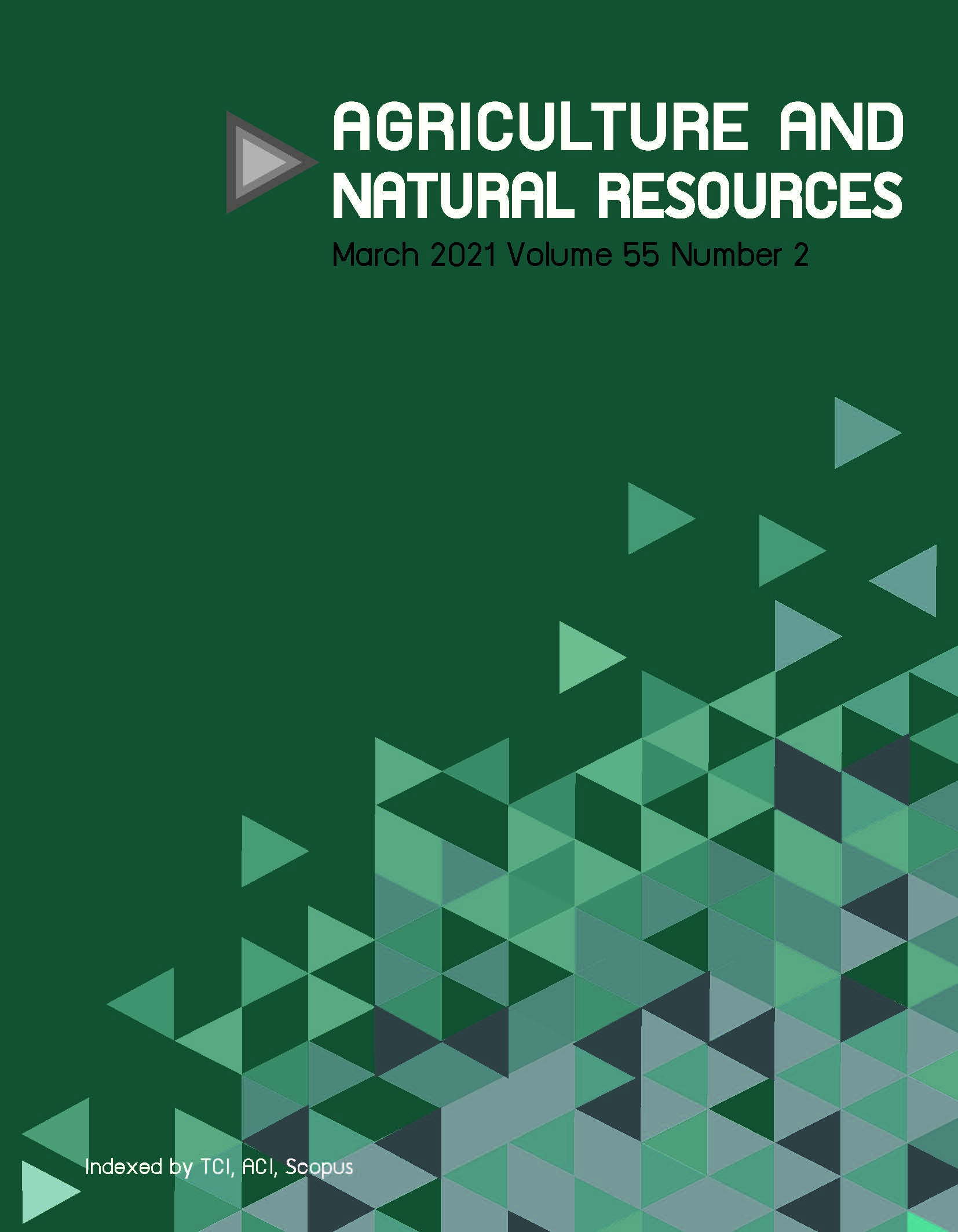Gas Chromatography-Mass Spectrometry Analysis and Antimicrobial Activity and Cytotoxic Effect of Stephania oblata Craib
Keywords:
Antimicrobial activity, Cytotoxicity, Gas chromatography-mass spectrometry (GC-MS) analysis, Stephania oblata CraibAbstract
Stephania oblata Craib is a traditionally used plant with various therapeutic properties. However, there have been no published reports on the phytochemical and biological activities of this plant. In the present study, the ethanolic extract of this plant was evaluated for its antimicrobial activity against some bacterial strains (Escherichia coli, Pseudomonas aeruginosa, Staphylococcus epidermidis and methicillin-resistant Staphylococcus aureus) and the fungus Candida albicans using the disc diffusion and broth dilution methods. The results demonstrated the minimum inhibitory concentration (MIC) values of the plant extract were in the range 0.97–3.90 mg/mL. The minimum bactericidal concentrations of S. oblata for E. coli, P. aeruginosa and S. epidermidis were 1.95, 15.63 and 1.95, respectively, and the minimum fungicidal concentration of S. oblata for C. albicans was 7.81 mg/mL. In addition, cytotoxicity on the human cholangiocarcinoma cell line, KKU-M213 was determined using 3-[4,5-dimethylthiazol-2-yl]-2,5 diphenyl tetrazolium bromide assay. The results showed potent cytotoxicity with mean (± SD) half-maximal inhibitory concentration values of 18.32±0.42 μg/mL at an exposure time of 96 hr. Furthermore, gas chromatography-mass spectrometry analysis of the S. oblata extract identified 43 phytochemical constituents, indicating that it was rich in lipids, benzenoids, organometallic compounds, carbohydrates, organoheterocyclic compounds and alkaloids. This study was the first to present the phytochemical characterization of S. oblata and the evaluation of its biological activities. Based on the obtained results, S. oblata could be an alternative new source for the isolation and identification of novel bioactive molecules for pharmacological purposes.
Downloads
Published
How to Cite
Issue
Section
License

This work is licensed under a Creative Commons Attribution-NonCommercial-NoDerivatives 4.0 International License.
online 2452-316X print 2468-1458/Copyright © 2022. This is an open access article under the CC BY-NC-ND license (http://creativecommons.org/licenses/by-nc-nd/4.0/),
production and hosting by Kasetsart University of Research and Development Institute on behalf of Kasetsart University.







